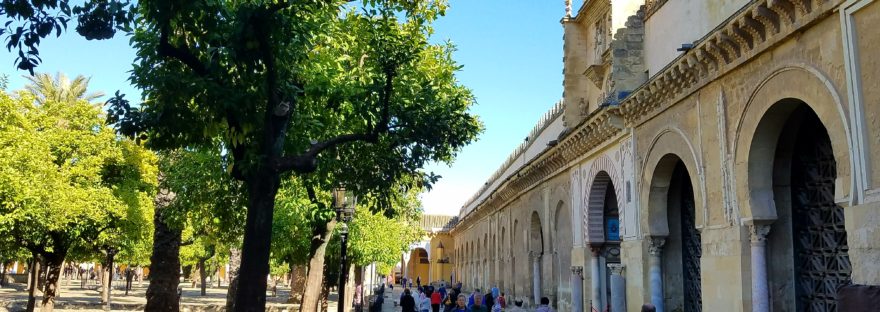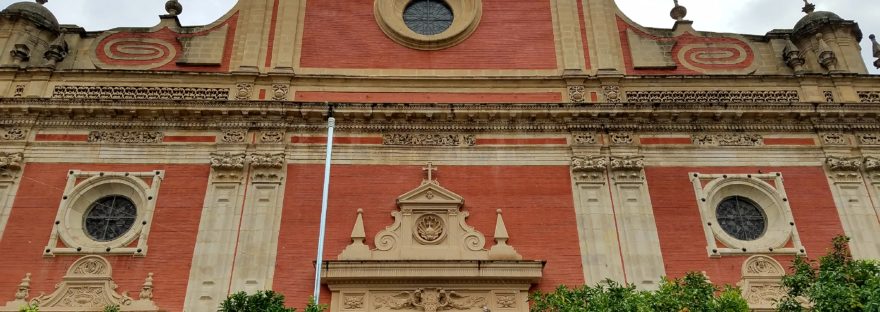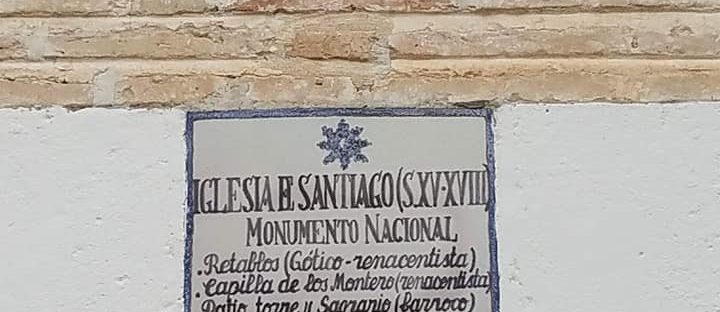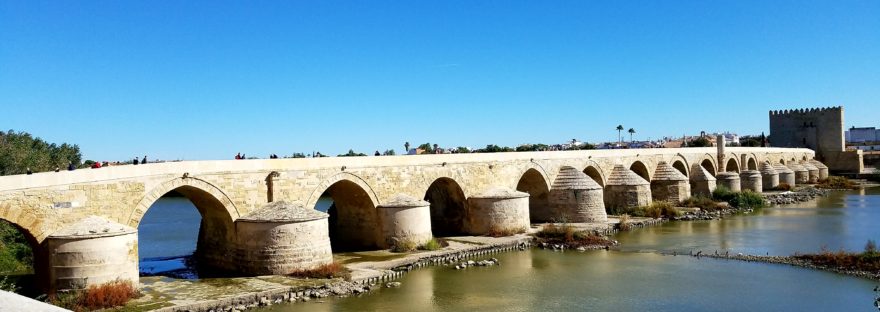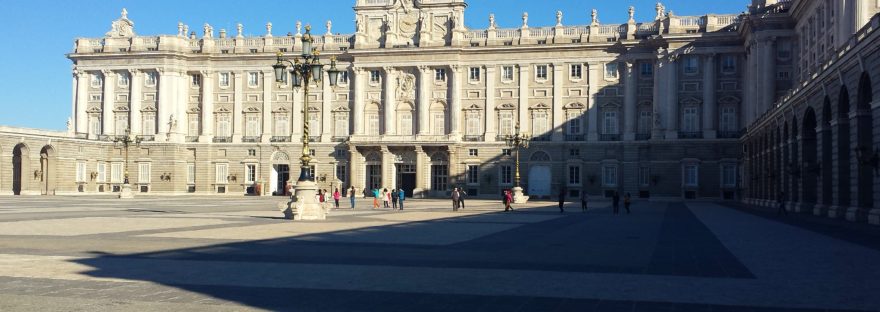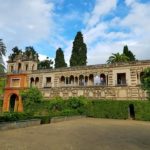 In the Real Alcazar in Seville, crossing the “Puerta del Privilege”, one gains access to the “Grutesco” gallery. Continue reading “Gardens – Real Alcazar”
In the Real Alcazar in Seville, crossing the “Puerta del Privilege”, one gains access to the “Grutesco” gallery. Continue reading “Gardens – Real Alcazar”
Category: Spain
Church of San Ildefonso
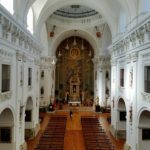 In the Church of San Ildefonso, known commonly as the Jesuit Church in Toledo, Spain, we can find what has been termed a “trompe l’oeil” which is nothing more than the illusion of fake architecture that created with paint, surrounded by columns and frame paintings in perspective. Continue reading “Church of San Ildefonso”
In the Church of San Ildefonso, known commonly as the Jesuit Church in Toledo, Spain, we can find what has been termed a “trompe l’oeil” which is nothing more than the illusion of fake architecture that created with paint, surrounded by columns and frame paintings in perspective. Continue reading “Church of San Ildefonso”
The Sacrarium Chapel – Cathedral Mosque of Cordoba
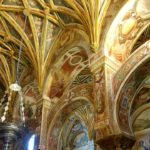 The Chapel of the Tabernacle or Sacrarium (Capilla del Sagrario) of the Cathedral Mosque of Cordoba, Spain, was one of those surprises that leave you speechless. After seeing so many combined architectural elements of Arab culture and Christianity, suddenly one discovers this chapel filled with murals on all walls, columns, arches and headers, it was amazing. Continue reading “The Sacrarium Chapel – Cathedral Mosque of Cordoba”
The Chapel of the Tabernacle or Sacrarium (Capilla del Sagrario) of the Cathedral Mosque of Cordoba, Spain, was one of those surprises that leave you speechless. After seeing so many combined architectural elements of Arab culture and Christianity, suddenly one discovers this chapel filled with murals on all walls, columns, arches and headers, it was amazing. Continue reading “The Sacrarium Chapel – Cathedral Mosque of Cordoba”
Collegiate Church of the Divine Savior of Seville
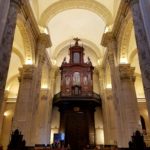 At the site today of the Collegiate Church of the Divine Savior of Seville in Spain, were found ruins of what during earlier periods were, a Roman temple, an early Christian basilica, and temples of the Visigoth and Mozarabic. Continue reading “Collegiate Church of the Divine Savior of Seville”
At the site today of the Collegiate Church of the Divine Savior of Seville in Spain, were found ruins of what during earlier periods were, a Roman temple, an early Christian basilica, and temples of the Visigoth and Mozarabic. Continue reading “Collegiate Church of the Divine Savior of Seville”
Bridge of Alcantara
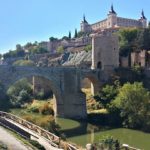 The Alcantara bridge in Toledo, Spain, was declared a national monument in 1921. Located at the foot of the Servando Castle, it is one of the bridges leading into the city. Continue reading “Bridge of Alcantara”
The Alcantara bridge in Toledo, Spain, was declared a national monument in 1921. Located at the foot of the Servando Castle, it is one of the bridges leading into the city. Continue reading “Bridge of Alcantara”
The Lion’s Gateway
 The Lion’s Gate, formerly called Puerta de la Monteria, is the main entrance to the Real Alcazar in Seville. Its construction is of the Almohad style and is the gateway to the main entrance to the courtyard of the Lion and the palace of King Pedro I, whom some called “the Cruel” and others “the Just”. Continue reading “The Lion’s Gateway”
The Lion’s Gate, formerly called Puerta de la Monteria, is the main entrance to the Real Alcazar in Seville. Its construction is of the Almohad style and is the gateway to the main entrance to the courtyard of the Lion and the palace of King Pedro I, whom some called “the Cruel” and others “the Just”. Continue reading “The Lion’s Gateway”
The Cathedral Mosque
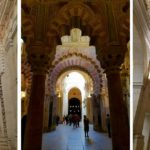 The Cathedral-Mosque of Cordoba, has been suject to a series of expansions and according to the richness of the materials used during the same, one can clearly distinguish that the first extensions were the most richly ornamented. In 822 Abderrahman II expanded the prayer hall into eight sections to the south, with a clear Abbasid influence in its decoration, the product of political contacts with the Eastern Caliphate and the arrival of individuals from the East to the Peninsula. Continue reading “The Cathedral Mosque”
The Cathedral-Mosque of Cordoba, has been suject to a series of expansions and according to the richness of the materials used during the same, one can clearly distinguish that the first extensions were the most richly ornamented. In 822 Abderrahman II expanded the prayer hall into eight sections to the south, with a clear Abbasid influence in its decoration, the product of political contacts with the Eastern Caliphate and the arrival of individuals from the East to the Peninsula. Continue reading “The Cathedral Mosque”
Church of St. James in Ecija
The Church of “Santiago” or the Church of St. James the Elder in Ecija, Sevilla Province, is considered the most interesting buildings and one of the most elegant churches in all of Andalusia. It was declared of cultural interest as a historic monument in 1983. It is the canonical headquarters of the Brotherhood of Santiago, or of students. Continue reading “Church of St. James in Ecija”
The Roman Bridge of Córdoba
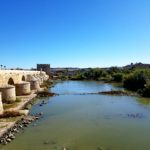 The Roman Bridge of Córdoba, also known as the “Old Bridge”, presently has 16 of the original 17 arches and measures across 331 meters (over 361 yards). It was built in the I Century B.C. over the Guadalquivir River and is still in use after more than 20 centuries. Continue reading “The Roman Bridge of Córdoba”
The Roman Bridge of Córdoba, also known as the “Old Bridge”, presently has 16 of the original 17 arches and measures across 331 meters (over 361 yards). It was built in the I Century B.C. over the Guadalquivir River and is still in use after more than 20 centuries. Continue reading “The Roman Bridge of Córdoba”
A Saturday in Madrid
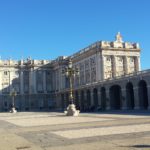 Saturdays are usually hectic days and for us even more, but we were in Madrid. And although life in Madrid begins at 10: 00h, we wasted no time and set out early on its conquest. Continue reading “A Saturday in Madrid”
Saturdays are usually hectic days and for us even more, but we were in Madrid. And although life in Madrid begins at 10: 00h, we wasted no time and set out early on its conquest. Continue reading “A Saturday in Madrid”

